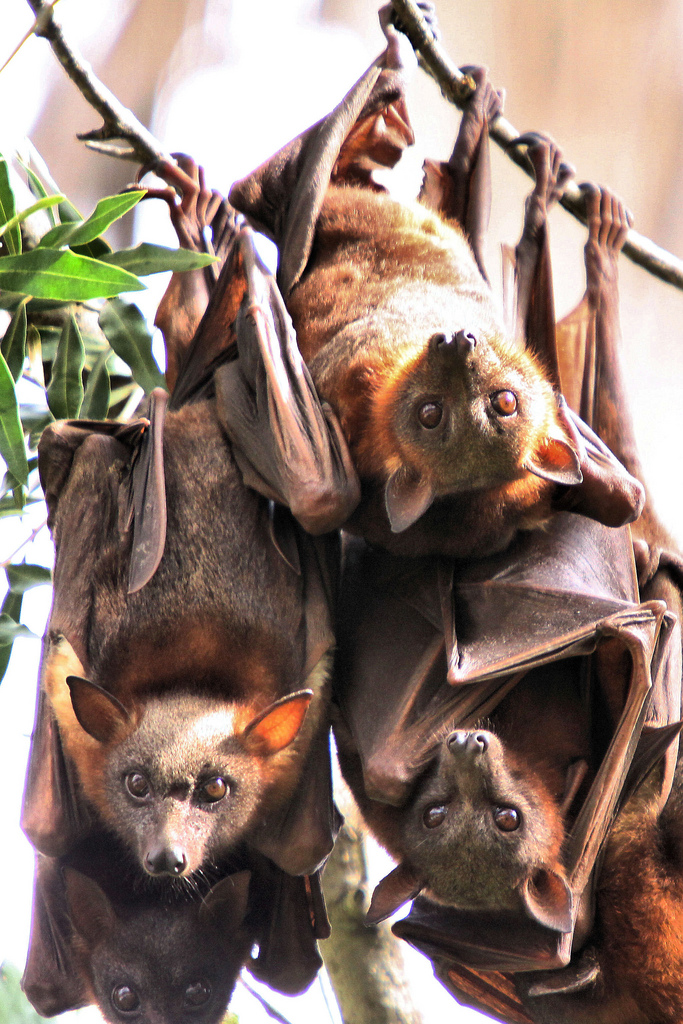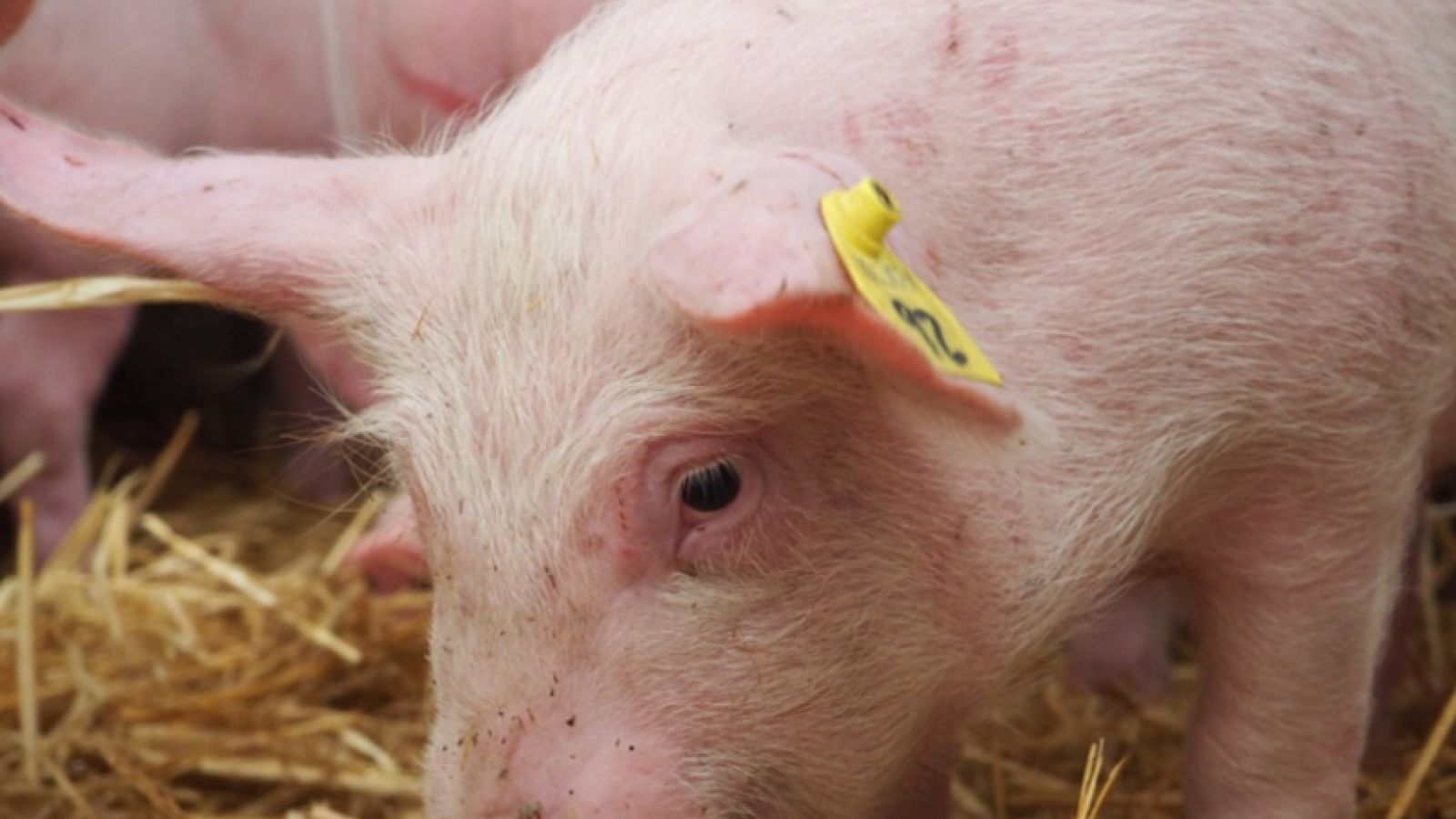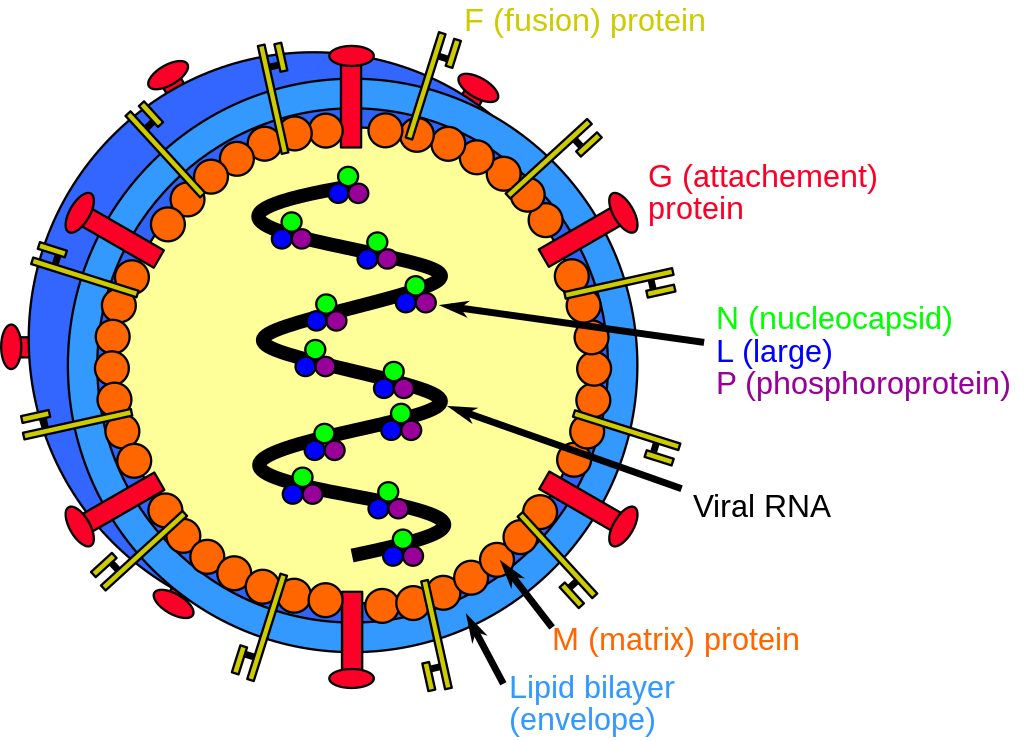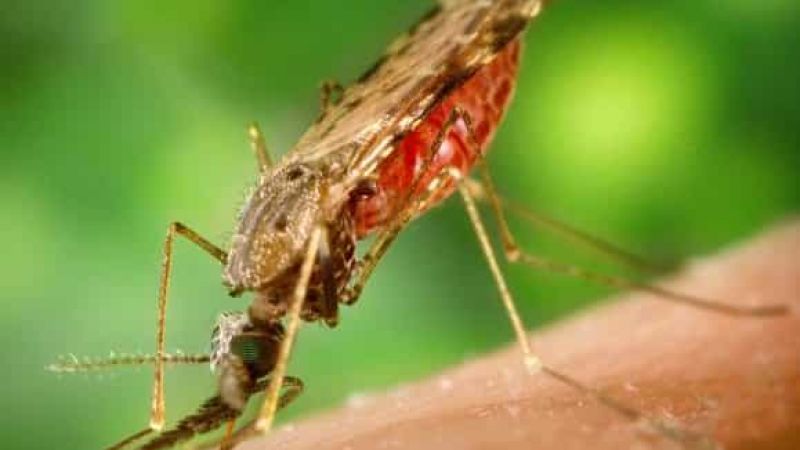Rare Disease day and it’s the opportunity to shine a spotlight on those diseases that don’t necessary make the headlines. When you think deadly, sporadic, RNA virus, your thoughts don’t necessarily go to pigs, but they might one day. And researchers are trying to prevent, what are today rare deadly events, from becoming the next deadly plague.
https://commons.wikimedia.org/w/index.php?curid=6523380

Old World fruit bats are the natural reservoir for the virus but it can also be found in pigs, causing an unapparent or mild disease. Direct pig to human transmission was responsible for the first and still most devastating Nipah Virus outbreak in Malaysia and Singapore in 1998-99 with nearly 300 human cases and over 100 fatalities.
By Mdk572 - Own work, CC BY-SA 3.0, https://commons.wikimedia.org/w/index.php?curid=17147834
Although the Nipah virus was first isolated from humans, “It was very clear that there was a link to pigs because the people who were being hospitalized were pig farmers, pig workers and abattoir workers. Researchers therefore went looking for the culprit in the pig population and found the Nipah virus”, explains Dr Simon Graham, specialist of the virus working at The Pirbright Institute.
“The clean-up operation to eliminate the virus was costly, in pig lives and economic resources. Nearly 40% of the Malaysian pig population had to be slaughtered - almost 1.1 million animals - and US$582 million were spent in the operation. It was obviously also a very difficult clean-up operation. The pigs were harnessing viruses that could kill people that came into contact with infected pig secretions.”
The Nipah virus outbreaks in Malaysia and Singapore demonstrated that pigs can play a key role in the epidemiology of virus by acting as an amplifier host: the virus reproduces in the pig and is spread by the pig.
There have since been a limited number of other small, more sporadic outbreaks in the human population, all in South East Asia, but probably from coming into contact with the bat population. The Nipah virus remains a rare disease in both pigs and humans. There are no other reports of Nipah disease outbreaks in pig populations. However, that isn’t to say that another large scale event can’t happen. And, despite the importance of the Nipah virus as an emerging disease with the potential for pandemic, no vaccines or therapeutics are currently approved for human or livestock use.
Strategies to avoid a large scale pandemic
“So obviously controlling the virus in the bat population is very challenging,” points out Dr Graham. “At The Pirbright Institute, we are working with partners to develop a vaccine that could be used in pigs. If you can get an immune pig population, this would reduce the chances of the virus spreading onwards to people.”
South East Asian countries where the Nipah virus is present naturally in the bat population have some of the highest pig densities anywhere in the world. The threat of the event occurring again is a real concern.
Dr Graham’s team are evaluating several vaccine candidates with the aim of developing an inexpensive, safe and efficacious vaccine for use in pigs to protect against Nipah virus infection and transmission, thereby reducing the risk to public health. Two candidate vaccines are based on recombinant target proteins, glycoprotein G and the fusion protein F, and another uses a live viral vector that expresses the G protein.
One of the vaccine candidates is similar to the Equivac® Hendra virus vaccine, which is licensed for use in horses to protect against the closely related Hendra virus. Used in Australia, the vaccine protects horses against the virus and therefore the humans in contact with the animals.
The development of a NiV vaccine for use in pig populations would decrease the major risk the Nipah Virus poses to both animal and human health. But why focus on pigs and not find a human vaccine directly?
The need for a human vaccine against the Nipah Virus has been clearly expressed by the WHO and the CEPI, who has prioritised the virus as one of the diseases for which it wants to support the development of a human vaccine. “But developing an animal vaccine take less time and is less challenging than a human vaccine,” explains Dr Graham. “However, the vaccines that we are testing are not pig specific and could then be transposed to humans.”.
The Nipah virus is also a particular concern because it can infect many different mammalian species, so it could reach other domestic animal species. This research could be the stepping stone to a therapeutic treatment in humans and in other animals.
Last edited: 4 March 2022 12:04




